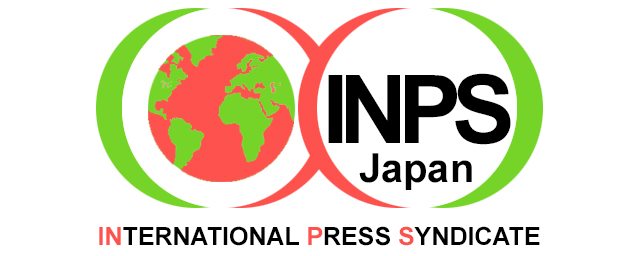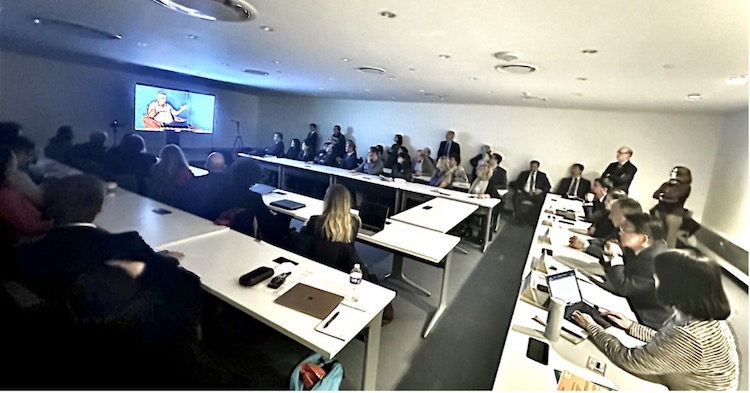UNITED NATIONS (IPS) – This week in New York, nuclear arms and the efforts to abolish these weapons will reign paramount. Since its adoption in 2017 and its subsequent implementation in 2021, the Treaty on the Prohibition of Nuclear Weapons (TPNW) has been signed by over 90 Member States, 69 of whom have ratified or acceded to it. JAPANESE
This year commemorates the Second Meeting of State Parties, where the member states and NGOs will come together to revisit the Treaty, and the wider issues that emerge from the question of disarmament. The side events planned at the UN for this week will explore those issues in greater depth with the scope to examine the humanitarian impact of nuclear testing on civilians.
Ultimately, the true cost of these nuclear weapons are the lives that are irreparably affected by the tests and the subsequent radioactive emissions. Kazakhstan has stood as a champion for nuclear disarmament since its independence, citing its own peoples’ suffering due to nuclear testing that was conducted in the region half a century ago.
The premiere of a documentary film served as a stark reminder about the human cost of nuclear weapons testing. “I Want to Live On: The Untold Stories of the Polygon” was created by the Center for International Security and Policy (CISP), a Kazakh-based NGO with a focus on nuclear disarmament in the context of Kazakhstan and Central Asia. Created with the support of Soka Gakkai International (SGI), the documentary features interviews with people living in the region which once hosted the Semipalatinsk nuclear testing site. In these interviews, the audience is informed of the impact these tests had on the lives of the community at the time, and the subsequent challenges they and future generations have had to deal with.
The premiere event also featured a panel of speakers from CISP and SGI, which was coordinated by the Kazakhstan Mission to the UN and the International Campaign to Abolish Nuclear Weapons (ICAN). Among the speakers present at this side event were Kazakh government representative Arman Baissuanov, SGI’s Director-General of Peace Affairs Hirotsugu Terasaki, and Director of CSIP Alimzhan Akmentov. Also present at the event was Algerim Yelgeldy, a third-generation survivor of nuclear testing, whose personal account provided the perspective into the lived experience of contending with the effects of nuclear testing on health, well-being, and the impact on day-to-day life.
In its short runtime of twenty minutes, the documentary packs more than a few key points. The health problems that people living in the area were afflicted with continue to bog them down, generations later. Yelgeldy, who has cancer, remarked that the number of cancer cases reported in the region is likely due to the nuclear testing conducted decades prior. Speaking at the panel, she added, “when I was diagnosed in 2015, there were [older] people who were affected. But in recent years, the disease has gotten younger.” Meaning, an increase of cancer diagnoses in younger people, the latest generation. Yelgeldy attested that many of the residents in the region today live with the consequences of nuclear testing, even if they were not alive to witness them being conducted. The interviewees in the documentary share accounts of losing loved ones due to health complications brought on by radiation, or personally living with them and having to adjust their lives accordingly.
Perhaps more harrowing were the institutional responses to this reality. The true nature of the military tests was not initially made aware to residents, according to the interviews. By the time the site was shut down in 1991, it’s been estimated that 1.5 million people were exposed to fallout, according to Baissuanov. Compensation to the victims was only granted one time in 1993, after the test site was closed down, but this did not account for future generations, and hyperinflation at the time meant that little of it amounted to much. Dmitry, a third-generation survivor, spoke on how, despite having a congenital genetic disorder that impacted his health, medical authorities did not recognize this as a disability until very recently.
Speaking at the panel, Akhmetov shared his hope that the film would “continue to leave an impact on people”. He added that for members of academia and international civil service discussing nuclear disarmament, the focus may lie on reports and findings to make the case. Yet it also runs the risk, he added, “…that we seem to forget that there are people behind [the findings]; human beings who have been impacted”.
Terasaki of SGI affirmed the documentary for its depiction of the “threat of nuclear testing and the reality of the damage”, which he hoped would bring focus to the “lived realities and experiences of people”. “It is vital that people everywhere raise their voices to challenge the assumptions that nuclear weapons are needed,” he said. “…The Soka Gakkai International (SGI) will continue to educate the public about the suffering of global hibakusha, and to promote victim assistance and environmental remediation as called for in Articles 6 and 7 of the TPNW. The voices of real people shared… will be invaluable in that effort.”
In an earlier interview, Terasaki called for the abolition of weapons, appealing to the humanitarian conscience. “So long as the risk of nuclear weapon use persists, we must never lose consciousness of the violent threat and affront to our humanity that these weapons pose. Together, let us send a resolute message to the world that we will not tolerate the existence of nuclear weapons, and let us continue to forge a path toward their abolition.”
The panelists and the documentary called for greater transparency on nuclear testing and their impact. That the case of Kazakhstan would stand as an example for countries to dissuade nuclear expansion. Kazakhstan stands as the modern example that the real price is far too steep to pay. It was put best by one of the interviewees, Bolatbek Baltabek: “I think that our suffering will probably turn into history. In history, nothing is forgotten.”
The documentary, I Want to Live On, is available to view on YouTube.
Related Article: “I will not let tragedy happen again”
INPS Japan/ IPS UN Bureau Report


